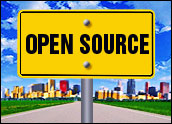Is Linux suitable for mission-critical applications at large firms? A recent report by Forrester says so. So do other experts. But there are still skeptics.
This spring, Forrester surveyed 150 IT decision-makers at North American companies about their open-source software strategies.
Half of those polled reported more than US$1 billion in annual revenue. Service, manufacturing and telecom firms accounted for 65 percent of respondents, the industries most likely to have Linux in production at the start of the year.
Not Just Infrastructure
The study pointed out that Linux is not just providing infrastructure services at these companies.
Some 53 percent of 140 companies queried by Forrester are “running mission-critical applications” on Linux, and 52 percent choose Linux for new applications, Forrester said in a report released last week called “Linux Crosses Into Mission-Critical Apps.”
The study pointed out that some 44 percent of respondents said they are using Linux to port older apps to new hardware, and 33 percent run apps that require Linux.
“Linux has been proven in all industries that it is capable of running mission-critical applications,” Marcel den Hartog, strategist for CA’s Linux Technology Group, told LinuxInsider in an interview. “It is stable, reliable and handles high workloads very well.”
Much Easier To Move
The strategist, den Hartog, said another big advantage of Linux is that it is much easier to move systems to faster or more cost-effective platforms when needed.
In-house Linux advisory groups are still rare, but those that exist are focusing on the critical issues, Forrester said. A total of 11 percent of the 85 firms using or planning to use Linux, already had internal open-source advisory bodies, Forrester said.
These panels are supporting the firm’s developers with tools and services, assessing open-source product quality, legal risks and community health, and also suggesting open-source products.
Although reports about Linux indicate it is apparently ready for prime time, there are still concerns from many companies who are operating conservatively with IT spending, even as the economy has finally emerged from recession into recovery.
Licensing Model a Concern
A key concern is the licensing model of Linux, said one expert. “Some of us remember when there were no licensing models and now it is changing dramatically,” Tommy Cathey, director of strategic relations for Blue Lance, told LinuxInsider in an interview.
“We use to just have a set of hard disks, then it went to upgrades, then server license, maintenance — now you hear subscription licensing,” added Cathey. “Others are leasing software, while some are charging ‘per seat’ or per object in a directory. So just by the shear number of licensing models, the market is constantly changing; therefore, this license model of ‘open source’ will undoubtedly change over time.”
On the upside, Cathey said that the IT staffs of enterprises could modify open-source software. But closed-source software — such as Microsoft Windows — cannot be modified, he said.
“Linux provides an operating system that is open source and gives you the freedom to provide available, flexible, and scalable networks with reduced cost,” Cathey said.






































